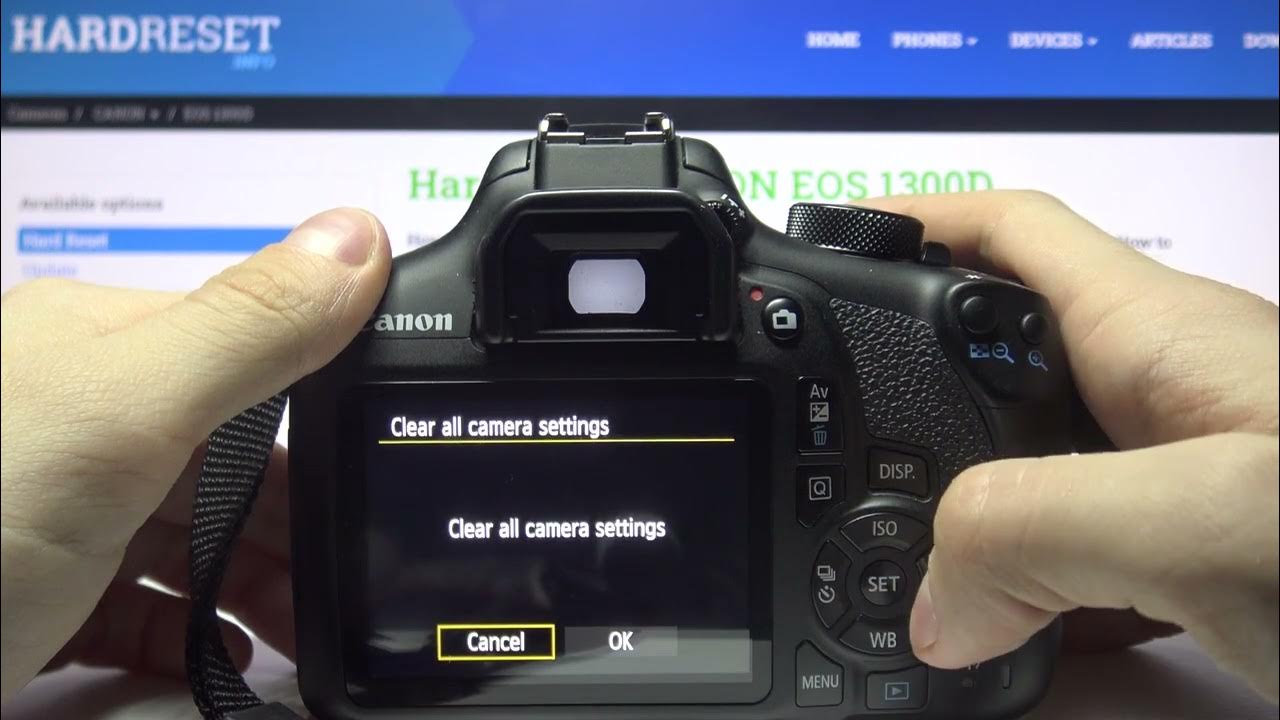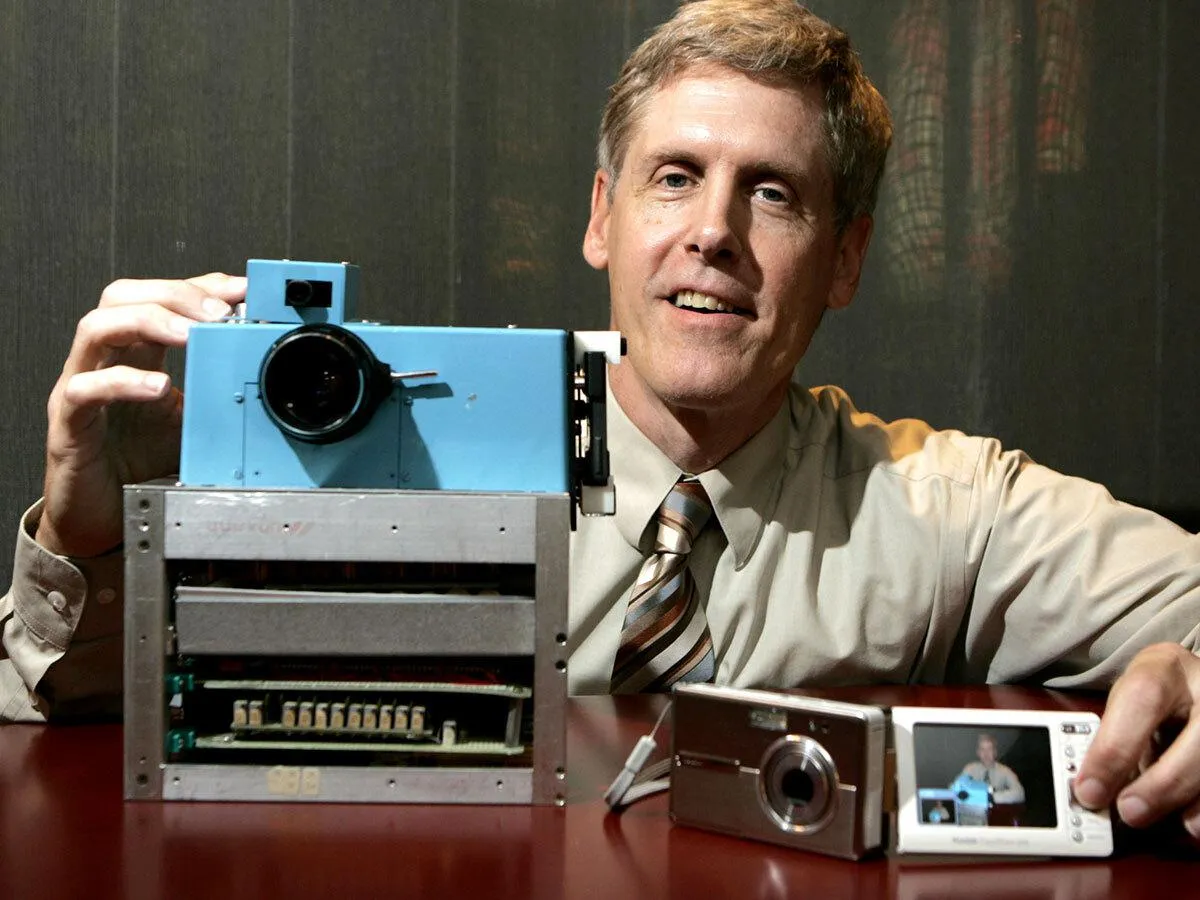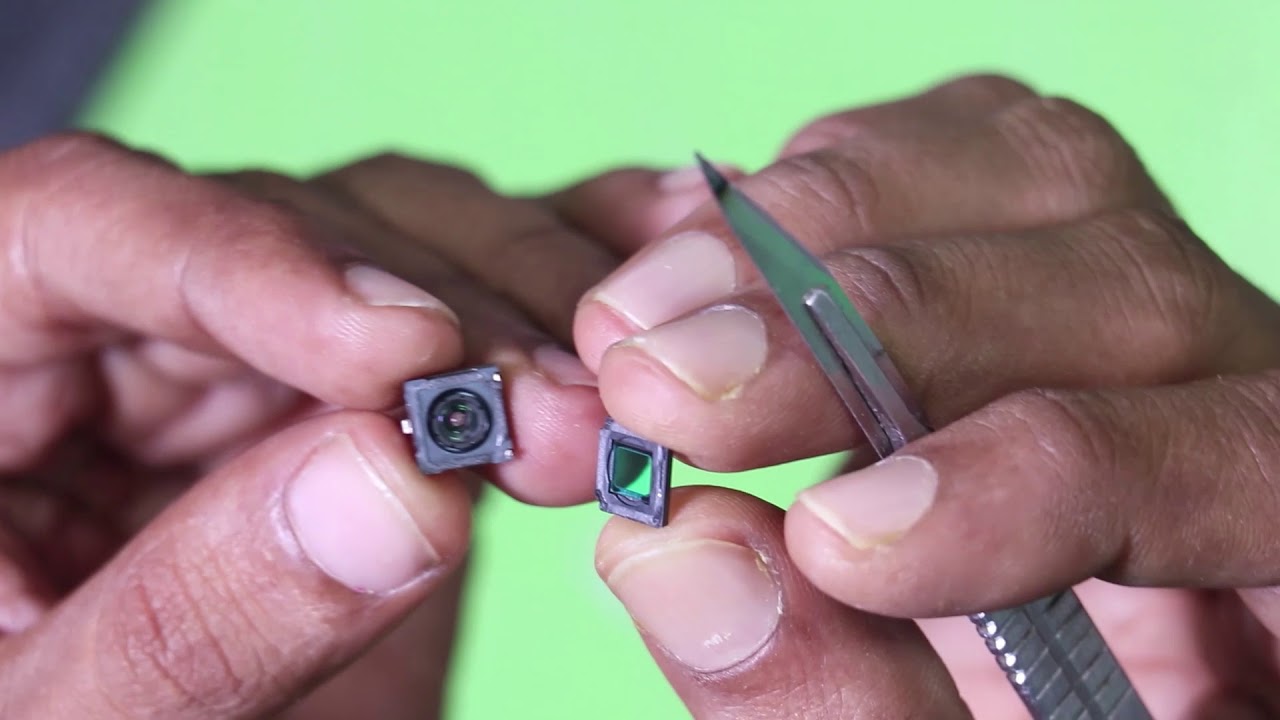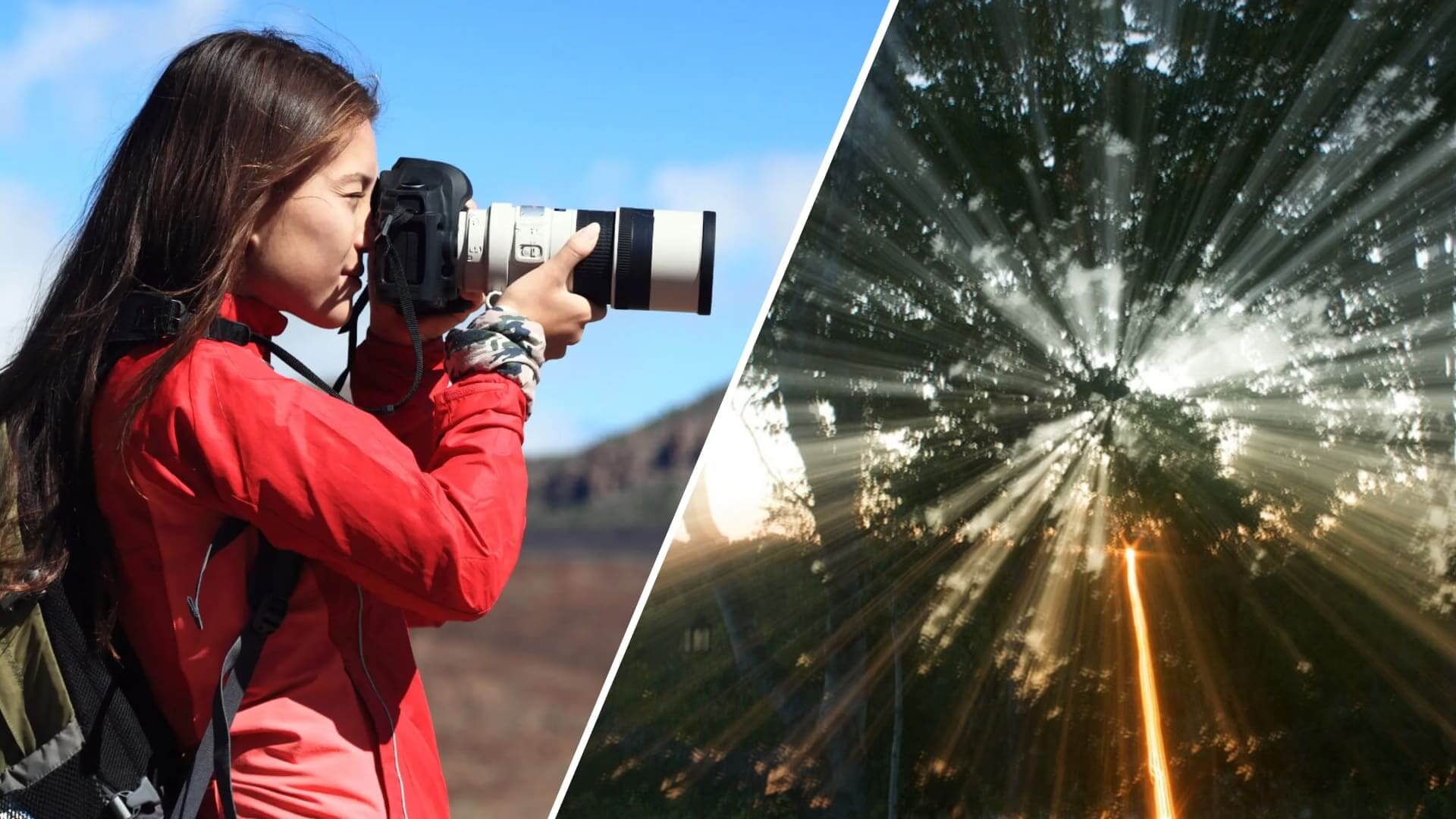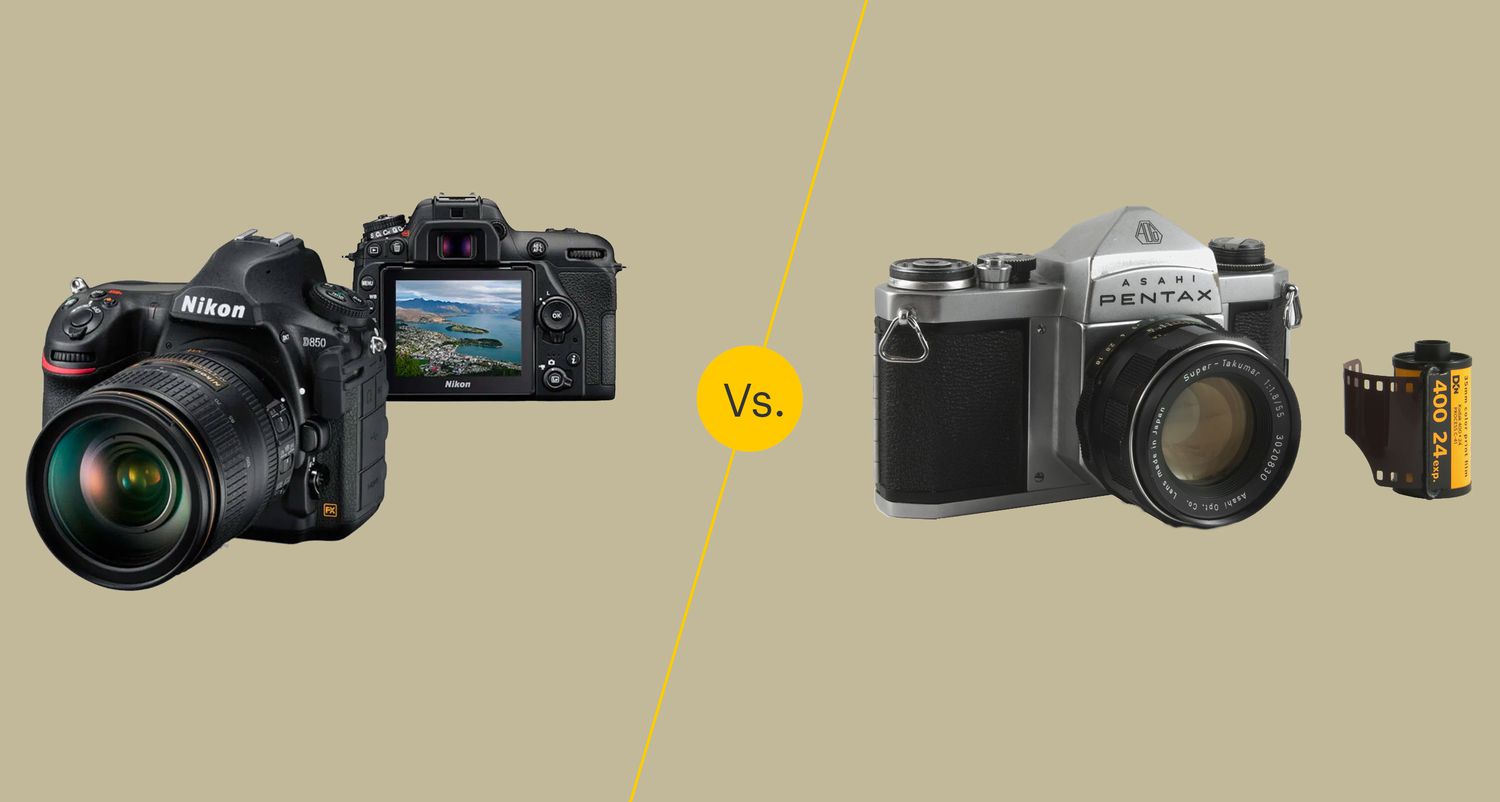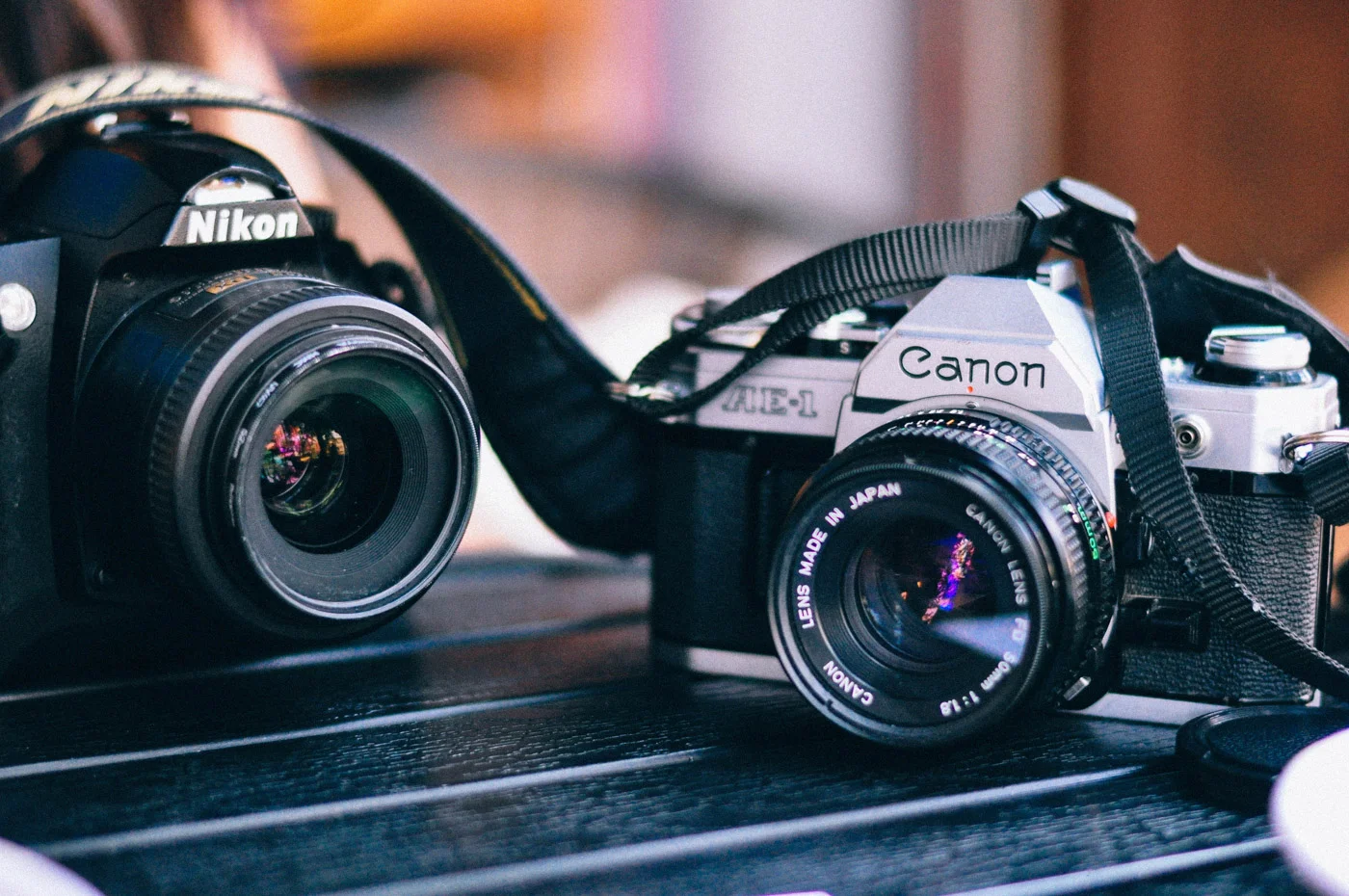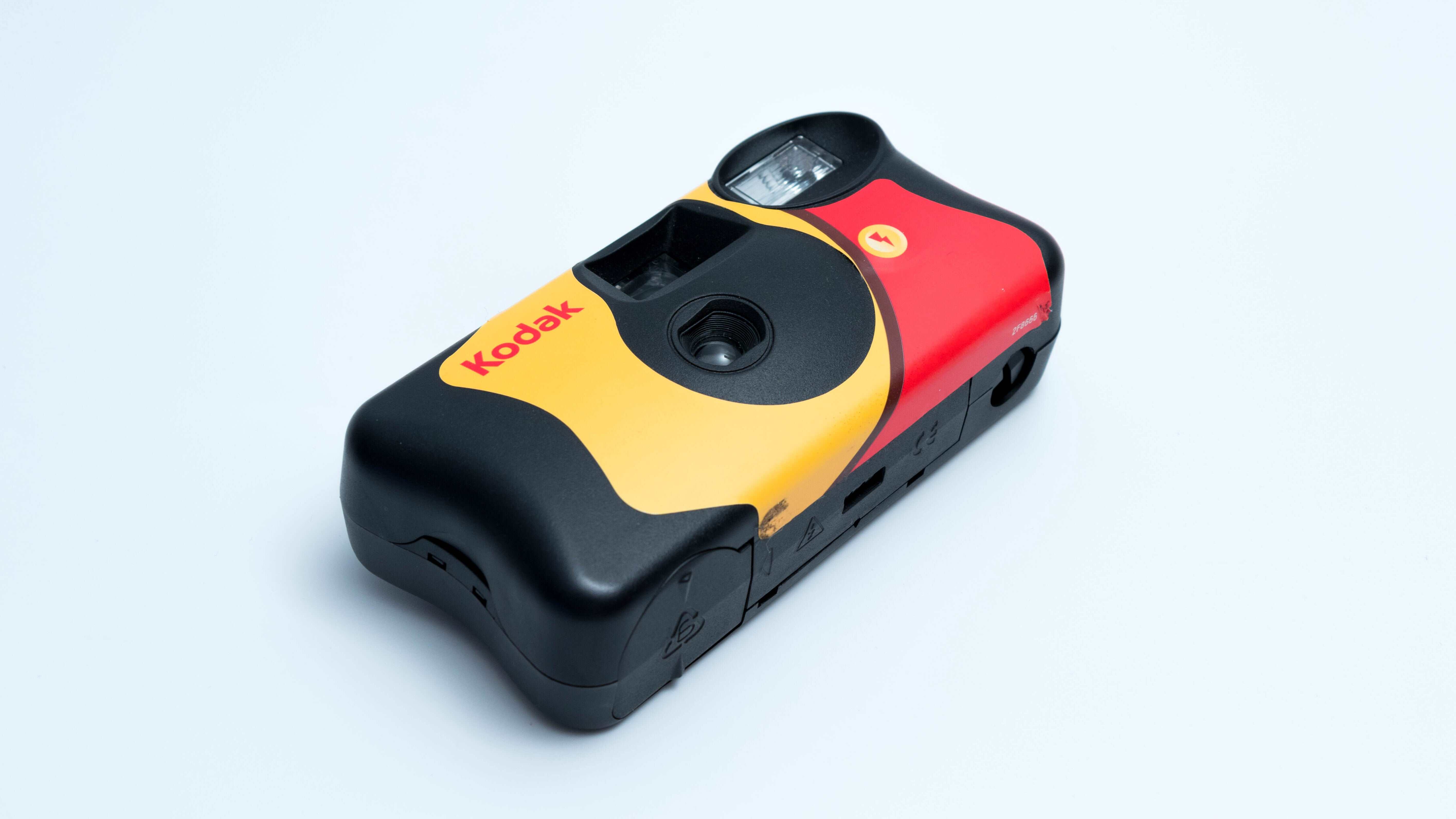Introduction
A digital camera is a revolutionary device that has completely transformed the way we capture and preserve moments in our lives. With its ability to capture high-quality images in an instant, digital cameras have become an essential tool for both amateur and professional photographers alike.
Unlike traditional film cameras, which require the development of film negatives to produce physical prints, digital cameras use electronic image sensors to capture, process, and store images digitally. This digital format allows for immediate viewing, editing, and sharing of photos, making digital cameras incredibly convenient and user-friendly.
With the rapid advancements in technology, today’s digital cameras offer a wide range of features and functionalities that have greatly enhanced the photography experience. From autofocus and image stabilization to built-in filters and connectivity options, these devices have become more versatile and powerful than ever before.
This article will delve into the fascinating world of digital cameras, exploring their key components, working principles, and various features. Whether you are a photography enthusiast looking to upgrade your skills or a curious individual wanting to learn more about the inner workings of this incredible technology, this guide will provide you with a comprehensive overview of how a digital camera works.
Key Components of a Digital Camera
A digital camera is a complex device, composed of several crucial components that work together to capture and process images. Understanding these key components is essential for gaining insight into how a digital camera functions. Let’s take a closer look at each of these components:
- Image Sensor: The image sensor is the heart of a digital camera. It is responsible for converting incoming light into an electrical signal that represents the captured image. There are two common types of image sensors used in digital cameras: CCD (Charge-Coupled Device) and CMOS (Complementary Metal-Oxide-Semiconductor).
- Lens: The lens is the optical component that focuses incoming light onto the image sensor. It plays a vital role in determining the quality, sharpness, and clarity of the captured images. Digital cameras often feature interchangeable lenses, allowing photographers to choose the appropriate lens for different shooting situations.
- Image Processor: The image processor is the brain of the camera, responsible for handling various tasks such as image compression, noise reduction, color correction, and image enhancement. It processes the electrical signal from the image sensor and converts it into a digital image file.
- Viewfinder: The viewfinder is the window through which photographers frame and compose their shots. It can either be an optical viewfinder that provides a direct view of the scene or an electronic viewfinder (EVF) that displays a digital representation of the captured image. Some cameras also feature a LCD screen that can be used as a live viewfinder.
- Storage Media: Digital cameras utilize various storage media to store captured images. Commonly used storage formats include SD (Secure Digital) cards, CF (CompactFlash) cards, and internal memory. The storage capacity of the media determines the number of images that can be stored before offloading or transferring them to another device.
These are just a few of the key components of a digital camera. Each component plays a crucial role in capturing and processing images, ensuring that photographers can capture their creative visions and preserve memories with precision and clarity. Understanding these components will help you make informed decisions when selecting a camera and enable you to maximize its capabilities.
Light Gathering and Focusing
Light gathering and focusing are essential processes in a digital camera that allow for the capture of a well-exposed and sharp image. The camera’s lens plays a crucial role in collecting and directing light onto the image sensor.
When light enters the camera through the lens, it passes through a series of glass elements, which help to control and manipulate the path and properties of the light. These elements include lenses, aperture blades, and filters, each contributing to the overall optical performance of the camera.
The lens in a digital camera is designed to gather as much light as possible to ensure proper exposure. The wider the lens opening or aperture, the more light it can gather. Aperture control allows photographers to adjust the size of the lens opening to control the amount of light reaching the image sensor. This, in turn, affects the depth of field, which refers to the area in the image that appears in sharp focus.
Once the light enters the lens, it reaches the image sensor and forms an inverted image. The image sensor, comprising millions of tiny photosensitive elements, converts the light into an electronic signal.
To ensure that the image is sharply focused, digital cameras employ various focusing mechanisms. Autofocus (AF) systems use contrast detection or phase detection methods to automatically analyze the scene and adjust the lens position to achieve optimal focus. Some cameras also offer manual focus options, allowing photographers to have full control over the focus placement.
Modern digital cameras often feature advanced focusing technologies, such as face detection, subject tracking, and eye detection. These technologies help to accurately track and focus on moving subjects, ensuring that the desired area of the image remains sharp.
Light gathering and focusing play a critical role in capturing well-exposed and sharp images. Understanding how these processes work enables photographers to make informed decisions regarding aperture settings, depth of field, and focus placement. With careful attention to light gathering and focusing, photographers can bring their creative visions to life through stunning and highly detailed images.
Image Sensor and Image Formation
The image sensor is a crucial component in a digital camera that converts incoming light into an electrical signal, ultimately forming the image that we see. The two most common types of image sensors used in digital cameras are CCD (Charge-Coupled Device) and CMOS (Complementary Metal-Oxide-Semiconductor).
When light enters the camera through the lens, it passes through various elements and reaches the image sensor. The image sensor is made up of millions of tiny photosensitive elements called pixels. Each pixel captures the intensity and color information of the light that falls on it.
The image sensor then converts the light into an electrical signal. In a CCD sensor, each pixel accumulates the charge as a result of the photons hitting it, and the accumulated charge is transferred across the sensor to a readout circuit. In a CMOS sensor, each pixel has its own amplifier and charge-to-voltage conversion circuitry, allowing for faster and more efficient readout of the pixel data.
Once the electrical signal is obtained from the image sensor, it is processed by the camera’s image processor. The image processor performs various tasks such as amplifying the signal, reducing noise, and applying color filters to produce a full-color image.
In addition to capturing light intensity, modern image sensors also capture color information. This is achieved by using color filter arrays, such as the commonly used Bayer filter. The Bayer filter is a pattern of red, green, and blue color filters that are placed over the pixels on the image sensor. By carefully analyzing the light passing through these filters, the camera’s image processor can determine the color composition of each pixel in the image.
Image formation on the image sensor is a complex process that involves the precise coordination of various elements. The lens focuses the incoming light onto the sensor, and the sensors capture the light and convert it into electrical signals. These signals are then processed to produce a digital image that reflects the scene that was captured.
Understanding how the image sensor and image formation process work is important for photographers to optimize their camera settings, such as ISO sensitivity and white balance, to achieve accurate and high-quality image reproduction. By mastering these concepts, photographers can capture stunning images that faithfully represent the scene they are photographing.
Image Processing
Image processing is a vital step in the workflow of a digital camera. After the image sensor captures the electrical signals corresponding to the scene, the camera’s image processor takes over to refine and enhance the image. This involves several algorithms and techniques to optimize the image quality, color accuracy, and overall appearance.
One of the primary tasks of image processing is noise reduction. Image sensors can introduce random noise, especially in low-light conditions. To counteract this, the image processor employs algorithms to analyze and suppress the noise while preserving the important details of the image. This results in cleaner and more visually pleasing images.
Sharpness and detail enhancement are also essential aspects of image processing. The image processor assesses the edges and fine details in the image, applying algorithms to enhance their clarity and definition. This helps to bring out intricate textures and ensure that the image appears crisp and well-defined.
Color accuracy and tone reproduction are crucial factors in image processing. The image processor analyzes the captured image, adjusts the color balance, and applies color correction algorithms to ensure accurate reproduction of colors. This helps to maintain the fidelity of the original scene and deliver vibrant and lifelike images.
Image processing also plays a significant role in image resizing and cropping. Cameras often provide options for resizing images to smaller dimensions or cropping to specific aspect ratios. The image processor applies interpolation algorithms to preserve details and maintain image quality throughout these manipulations.
Furthermore, image processing extends to creative filters and effects. In-camera filters allow photographers to enhance their images with artistic effects such as black and white, sepia, or vintage tones. These filters apply adjustments to the image’s colors, contrast, and saturation, resulting in unique and stylized renditions of the original scene.
Modern digital cameras also offer advanced features like HDR (High Dynamic Range) and panoramas. HDR combines multiple exposures of the same scene to capture a larger range of tones and details in high-contrast situations. Panoramas are created by stitching together multiple images to create a wide-angle composition. Both of these techniques rely on sophisticated image processing algorithms to merge and align the images seamlessly.
Image processing is a crucial aspect of digital photography that enhances and refines the captured images. The sophisticated algorithms and techniques implemented by the camera’s image processor help to reduce noise, enhance sharpness, improve color accuracy, and apply creative effects. Understanding the capabilities of image processing allows photographers to make the most of their camera’s features and capture visually stunning images.
Storage and File Formats
Storage and file formats are essential considerations when it comes to digital cameras. Once an image is captured and processed, it needs to be stored in a format that is compatible with a variety of devices and can be easily accessed and shared. Let’s explore the key aspects of storage and file formats in digital cameras.
Most digital cameras utilize removable storage media, such as SD (Secure Digital) cards or CF (CompactFlash) cards, to store images. These cards offer different storage capacities and transfer speeds, allowing photographers to choose the most suitable option based on their storage requirements and shooting preferences.
File formats determine how the image data is stored on the storage media. The most common file format for still images is JPEG (Joint Photographic Experts Group). JPEG is a compressed file format that strikes a balance between image quality and file size. It is widely supported by various devices and software applications, making it a versatile and accessible format for sharing and displaying images.
In addition to JPEG, some cameras also provide the option to capture images in RAW format. RAW files contain unprocessed and uncompressed data directly from the image sensor. This allows photographers to have complete control over the post-processing of the image, including adjusting exposure, white balance, and other parameters, without any loss of image quality. However, RAW files typically have larger file sizes and require specialized software to process and convert them into a usable format.
Video recording capabilities are another important aspect of storage. Digital cameras can capture high-quality videos with various resolutions and frame rates. The video files are typically stored in formats such as MP4, MOV, or AVI, depending on the camera’s specifications. These formats ensure compatibility with common video playback devices and video editing software.
Storage capacity is a crucial consideration for photographers, especially when shooting in situations where multiple images or longer videos are taken. Apart from choosing high-capacity storage media, cameras often offer options for image quality and compression settings. The higher the image quality and lower the compression, the larger the file size, requiring more storage space.
Connectivity options also play a role in accessing and transferring images. Digital cameras usually have USB ports or wireless connectivity (such as Wi-Fi or Bluetooth) that enable direct connection to a computer, smartphone, or other devices for quick and convenient file transfer and sharing.
Understanding storage options and file formats allows photographers to make informed decisions regarding storage capacity, image quality, and compatibility with different devices. It ensures efficient and convenient management of image and video files, allowing photographers to preserve and share their captured memories effortlessly.
LCD Display and Viewfinder
The LCD display and viewfinder are critical components of a digital camera that allow photographers to compose their shots, review captured images, and access various camera settings. They provide a real-time view of the scene and help photographers make precise adjustments to their composition and settings. Let’s explore the functionalities and benefits of LCD displays and viewfinders in digital cameras.
The LCD display, typically located at the back of the camera, serves multiple purposes. It acts as a live viewfinder, providing a real-time image preview of the scene being captured. This allows photographers to see exactly what the image will look like before pressing the shutter button. The LCD display also serves as a playback screen, allowing photographers to review and assess the images that have already been captured.
Modern cameras often feature high-resolution LCD displays with touch functionality, enabling photographers to navigate through menus, adjust settings, and select focus points with ease. This intuitive interface enhances the overall user experience and provides quick access to important camera controls.
While LCD displays offer convenience and versatility, they can sometimes be challenging to use in bright outdoor conditions. The glare from sunlight can make it difficult to see the details on the screen clearly. To overcome this limitation, some cameras are equipped with an electronic viewfinder (EVF). The EVF is essentially a mini LCD display placed in the eyepiece, simulating the experience of using a traditional optical viewfinder.
The electronic viewfinder automatically adjusts its brightness, color, and contrast to provide a clear view of the scene, regardless of the lighting conditions. This allows photographers to compose their shots accurately, even in bright sunlight. Additionally, the electronic viewfinder can display important shooting information, such as aperture, shutter speed, and exposure levels, making it easier for photographers to adjust their settings without taking their eyes off the scene.
The choice between using the LCD display or the viewfinder depends on personal preference and shooting conditions. Some photographers prefer the stability and precision of using the viewfinder, while others find the flexibility of the LCD display more appealing.
Both LCD displays and electronic viewfinders have their advantages and can greatly enhance the photography experience. They provide real-time image previews, access to camera settings, and playback options. Whether using an LCD display or an electronic viewfinder, photographers can confidently compose their shots and capture the desired image with precision.
Auto Focus and Auto Exposure
Auto focus and auto exposure are key features in digital cameras that help photographers achieve accurate focus and proper exposure settings, ensuring that their images are sharp and well-exposed. These automated functions make the camera more user-friendly and assist photographers in capturing their desired shots effortlessly.
Auto focus (AF) is a technology that allows the camera to automatically adjust the focus of the lens to ensure optimal sharpness. The camera’s AF system uses various methods to analyze the scene and determine the point of focus. This can include contrast detection, phase detection, or a combination of both.
Contrast detection AF measures the contrast between the pixels in the image to determine the focus point. It analyzes the sharpness of the image and adjusts the focus until the highest contrast is achieved. This method is commonly used in compact cameras and smartphones.
Phase detection AF, on the other hand, utilizes dedicated autofocus sensors or pixels on the image sensor to measure the phase difference between light rays entering the lens. It quickly calculates the necessary lens adjustments to achieve focus. This method is commonly found in DSLR and mirrorless cameras, providing faster and more accurate focusing performance, especially for moving subjects.
Auto exposure (AE) is another essential function that automatically determines the optimal exposure settings for a given scene. The camera’s AE system analyzes the available light and evaluates the scene’s brightness, contrast, and color. It then adjusts the aperture, shutter speed, and ISO sensitivity accordingly to achieve a well-exposed image.
The camera’s AE system often incorporates different metering modes to measure the exposure. These modes include evaluative or matrix metering, which evaluates the entire scene, as well as spot metering and center-weighted metering, which focus on specific areas of the scene. This versatility allows photographers to customize the exposure settings depending on their creative intent.
Auto focus and auto exposure work hand in hand to ensure sharp focus and proper exposure in various shooting situations. They simplify the photography process, particularly for beginners or in fast-paced situations where manual adjustments may not be feasible.
Modern digital cameras also offer advanced AF and AE features, such as continuous autofocus and auto exposure tracking. These technologies allow the camera to continuously track moving subjects and adjust focus and exposure settings accordingly, ensuring sharp and properly exposed images even in challenging conditions.
Understanding auto focus and auto exposure helps photographers make the most of their camera’s capabilities. While these automated functions are highly reliable, it is also important to have a basic understanding of manual focus and exposure settings to have more creative control over the final image. Having a balance between automated and manual control empowers photographers to achieve their desired artistic vision.
Shutter and Aperture Control
The shutter and aperture are two essential components in a digital camera that work together to control exposure and creative effects. Understanding how shutter and aperture control operate allows photographers to have more control over their images and explore various artistic possibilities.
The shutter is a mechanism that determines the amount of time the camera’s image sensor is exposed to light. It opens and closes, allowing light to reach the sensor for a specific duration. The length of time the shutter remains open is referred to as the shutter speed. Shutter speed is measured in seconds or fractions of a second, such as 1/1000, 1/250, or 1″, where 1″ represents one second.
Faster shutter speeds, such as 1/1000 or 1/2000, freeze motion and effectively capture fast-moving subjects without blur. On the other hand, slower shutter speeds, like 1/30 or 1″, create motion blur and can be used creatively to capture the sense of movement or to create light trails. The choice of shutter speed depends on the desired effect and the lighting conditions.
The aperture, also known as the f-stop, controls the size of the lens opening that lets light enter the camera. It is measured in f-numbers, such as f/2.8, f/5.6, or f/16. The aperture plays a vital role in determining the depth of field (DOF), which refers to the area of the image that appears in sharp focus.
A larger aperture (smaller f-number) like f/2.8 creates a shallow depth of field, where the subject is sharply focused, and the background is blurred. This effect is commonly used in portraits and macro photography to isolate the subject and create a pleasing bokeh effect. Conversely, a smaller aperture (larger f-number) like f/16 increases the depth of field, ensuring that both the subject and background are in focus. This is ideal for landscape photography or when maximum sharpness throughout the image is desired.
Both shutter speed and aperture control play a crucial role in exposure. When the camera is in auto mode or using program mode, the camera’s light metering system automatically adjusts the shutter speed and aperture to achieve a well-exposed image. However, photographers can take creative control by using manual or semi-automatic modes, allowing them to adjust the shutter speed and aperture independently.
It is important to note that changing either the shutter speed or aperture affects the exposure, so adjusting one may require compensating with the other to maintain a proper exposure. The camera’s light metering system assists in determining the appropriate exposure settings. In manual mode, the photographer has full control over both the shutter speed and aperture, providing complete creative freedom.
Understanding how shutter and aperture control work together empowers photographers to make deliberate choices in capturing images. By mastering their functions, photographers can control exposure, freeze or blur motion, and create unique visual effects to effectively convey their creative vision.
White Balance and Color Correction
White balance and color correction are essential factors in digital photography that ensure accurate and natural color representation in captured images. In different lighting conditions, the colors of light vary, and without proper adjustment, the resulting images may appear tinted with different color casts. Understanding white balance and color correction allows photographers to achieve more accurate color reproduction and convey the desired atmosphere in their photographs.
White balance refers to the adjustment of colors to appear neutral or white under different lighting conditions. It is necessary because light sources have different color temperatures, measured in Kelvin (K). Daylight typically has a color temperature around 5500-6500K and is considered neutral. It is used as the reference point for setting white balance.
Digital cameras offer various white balance presets, such as daylight, cloudy, shade, tungsten, fluorescent, and flash, to match the most common lighting conditions. These presets apply color adjustments to counteract the color cast caused by the different lighting sources. Auto white balance (AWB) is also available, where the camera analyzes the scene to determine the appropriate color temperature and adjust accordingly.
Despite the convenience of presets and AWB, photographers often encounter situations where customized white balance is necessary for accuracy. This involves using a white or gray reference point within the scene or adjusting the color temperature manually. Custom white balance ensures that the colors in the image are faithful to the actual scene and can be particularly useful in challenging lighting environments.
In addition to white balance, color correction is used to fine-tune the color balance and accuracy in an image. This involves adjusting the hue, saturation, and luminance of individual colors to achieve the desired result. Color correction can be done in-camera through menu settings or later during post-processing using photo editing software.
Color correction is often used creatively to enhance the mood or atmosphere of an image. For example, boosting warm tones to create a cozy and nostalgic feel, or desaturating colors to achieve a more muted and monochromatic look. It allows photographers to infuse their artistic vision into the final image and evoke specific emotions or convey a particular narrative.
Understanding white balance and color correction techniques empowers photographers to have control over the color rendition of their images. By selecting the appropriate white balance presets or customizing them, photographers can reproduce accurate colors and create visually compelling images that accurately represent the scene and convey the intended mood.
Zoom and Lens Options
Zoom and lens options are crucial considerations in digital cameras that provide photographers with the flexibility to capture a wide range of subjects and compositions. The zoom function allows photographers to adjust the focal length of the lens, while lens options offer a variety of perspectives and creative possibilities. Let’s explore the significance of zoom and lens options in digital photography.
Zoom refers to the ability of a lens to vary its focal length, allowing photographers to adjust the magnification and field of view. There are two common types of zoom lenses: optical zoom and digital zoom. Optical zoom utilizes the lens elements to physically change the focal length, while digital zoom enlarges the image digitally by cropping the captured frame.
An optical zoom lens provides true magnification, allowing photographers to zoom in and get closer to the subject without sacrificing image quality. This is especially useful for capturing distant subjects or shooting in situations where physical proximity is limited. The zoom range of a lens is usually specified in terms of its maximum zoom level, such as 3x, 5x, or even higher.
Zoom lenses with a wide range, such as 18-55mm or 70-200mm, are versatile options that cover a wide focal length spectrum. These lenses are often referred to as standard or telephoto zooms. They can be used for various photography genres, from landscape and portrait to wildlife and sports photography.
In addition to zoom lenses, photographers can choose from a wide variety of prime (fixed focal length) lenses. Prime lenses offer a single focal length, allowing for excellent image quality and wider maximum apertures. These lenses are appreciated for their sharpness, low light performance, and ability to achieve shallow depth of field.
Prime lenses come in various focal lengths, such as 35mm, 50mm, or 85mm, each offering a unique field of view and perspective. Wide-angle prime lenses, typically with focal lengths below 35mm, provide a broader perspective, making them ideal for landscapes or architectural photography. On the other hand, telephoto prime lenses, with focal lengths above 85mm, offer a narrower field of view and are well-suited for isolating subjects or capturing distant details.
Specialized lenses, such as macro lenses or fisheye lenses, provide additional creative options. Macro lenses enable photographers to capture intricate details and tiny subjects with exceptional clarity and magnification. Fisheye lenses, on the other hand, offer an ultra-wide angle of view, producing distorted and curved images that create a unique artistic effect.
Understanding zoom and lens options empowers photographers to select the most appropriate lens for a specific subject or genre. The choice between zoom lenses and prime lenses depends on individual shooting styles, desired flexibility, and the specific requirements of the photographic situation. Having a range of lenses at your disposal expands creative possibilities and allows for capturing diverse perspectives and compositions.
Connectivity and Sharing Options
In today’s interconnected world, digital cameras offer a range of connectivity and sharing options that make it easier than ever to share and transfer images. These features provide photographers with quick and convenient ways to share their work with others and streamline their photography workflow. Let’s explore the significance of connectivity and sharing options in digital cameras.
One of the most common connectivity options found in digital cameras is USB (Universal Serial Bus) connectivity. Cameras typically have a USB port that allows for direct connections to computers or other devices. This enables photographers to transfer their images directly to their computers for storage, editing, or sharing.
Wireless connectivity, such as Wi-Fi and Bluetooth, has become increasingly prevalent in modern digital cameras. These wireless capabilities allow photographers to transfer images wirelessly to their computers, smartphones, or tablets for immediate sharing or editing. Wireless connectivity also enables remote control of the camera, allowing photographers to adjust settings, trigger the shutter, or view the live view remotely.
Some cameras go beyond basic wireless connectivity and offer built-in NFC (Near Field Communication) or QR code functionality. These features allow for effortless pairing and transfer between the camera and compatible devices simply by tapping or scanning. This simplifies the process of instant sharing and transfer, particularly for social media platforms or cloud-based storage solutions.
Integrated GPS (Global Positioning System) is another connectivity feature in some digital cameras. GPS allows photographers to geotag their images by embedding location data into the image file. This feature is especially useful for travel photography or documenting outdoor adventures, as it enables photographers to precisely track the location where each photo was taken.
In addition to transfer and connectivity options, digital cameras often offer direct sharing capabilities. Social media integration allows photographers to upload and share images directly from the camera to their favorite social media platforms, such as Facebook, Instagram, or Twitter. This saves time and adds convenience, eliminating the need for transferring images to a computer first.
The use of dedicated smartphone apps provided by camera manufacturers further enhances connectivity and sharing options. These apps enable photographers to control the camera remotely, transfer images wirelessly, or even use their smartphones as a viewfinder for composition and capture. This seamless integration between the camera and smartphone encourages quick and easy sharing of images straight from the camera.
Understanding the connectivity and sharing options of a digital camera allows photographers to take advantage of these features to streamline their workflow and share their work effortlessly. Whether it’s transferring images wirelessly, geotagging photos, or sharing directly to social media platforms, these options provide greater convenience and connectivity in the digital photography experience.
Conclusion
Understanding how a digital camera works is essential for photographers to maximize their creative potential and capture stunning images. With its various components and functionalities, a digital camera offers a range of capabilities and features that have revolutionized the world of photography.
The key components of a digital camera, including the image sensor, lens, image processor, and storage media, work together seamlessly to capture, process, and store images digitally. The light gathering and focusing mechanisms ensure proper exposure and sharpness, while the image processing algorithms enhance the overall quality and appearance of the captured images.
Features like auto focus and auto exposure provide ease of use and precision in capturing images, while the control over shutter speed and aperture allows photographers to get creative with motion and depth of field effects. Understanding white balance and color correction ensures accurate and natural color reproduction in images.
Connectivity and sharing options in digital cameras allow for effortless transfer and sharing of images, from USB connectivity to wireless capabilities like Wi-Fi and Bluetooth. Direct sharing to social media platforms or using smartphone apps for remote control and image transfer have made sharing images quick and convenient.
By familiarizing themselves with the workings of a digital camera, photographers can make informed decisions when selecting equipment, optimizing camera settings, and capturing images. The technical understanding, combined with creative vision, enables photographers to push boundaries, capture impactful moments, and convey their artistic expressions through the power of photography.
Whether you are a beginner exploring the world of digital photography or an experienced photographer honing your skills, the knowledge of how a digital camera operates empowers you to make the most of the available features and capture images that truly reflect your creative vision.










